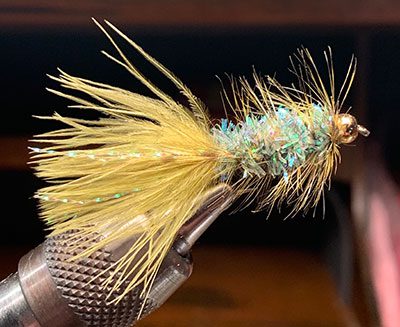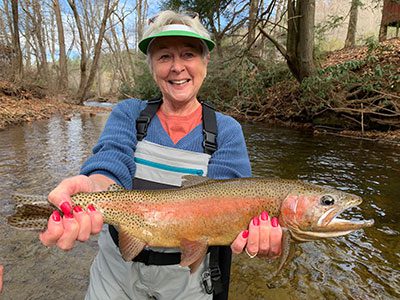
By David Hulsey
The month of February can be freezing cold although we can have a few decent days in there that make you want to hit the river. Sometimes, this month is the time for snow here in the Georgia and North Carolina mountains. Timing your trip to accommodate the warmer days is a good idea being that you’ve probably been holed up by the fire since December. Hopefully, your fly tying bench has seen good use through the winter and you have a pile of flies at your disposal.
Fly selection in the dead of winter can vary from total junk flies, such as squirmies, eggs, and mop flies for delayed harvest stockers to carefully selected patterns to match the hatch, or minnow for wild or educated trout that were stocked during the DH season. As trout are able to survive for at least a couple of weeks after stocking, they start to figure out what to eat, or die. Fly pattern selection for these fish, or trout that have never seen the stocking truck, gets more critical the more educated they get. Most February hatches are minimal at best, with Tiny Winter Black Stoneflies, Black Midges, Blue Winged Olives, and Black Caddis making up the bulk of the dry fly fishing opportunities. Surface fishing with imitations of these bugs usually happens on the warmest days with ample sunshine. Small size 16 Black Stimulators for the stones, size 18 Griffith’s Gnat for the midges, size 18 Parachute B.W.O. for the blue wings and a size 16 Black Elk Hair Caddis for the black caddis will get the job done.

The Black Caddis Hatch that usually happens during the last week of February can be a little squirrelly with fish sometimes, or all the time, keying in on the emerging or descending bugs. If you see splashy rises, it’s a sure sign that the trout are eating emergers and the selection of a swung Black soft Hackle will outperform the dry fly 10 to 1. The same goes for the B.W.O. hatches, where splashy rises indicate that an olive soft hackle or emerger would be a more sound choice.
Nymph patterns for the winter seem to work best with less flash and more realism to the tie. By now, brass beads are pretty much trout repellant to the fish and they will literally move out of the way knowing full well they are a no-no. Use of fluorocarbon tippet is essential to getting more strikes anytime you are fishing underwater but even more when wild or educated trout are involved.
